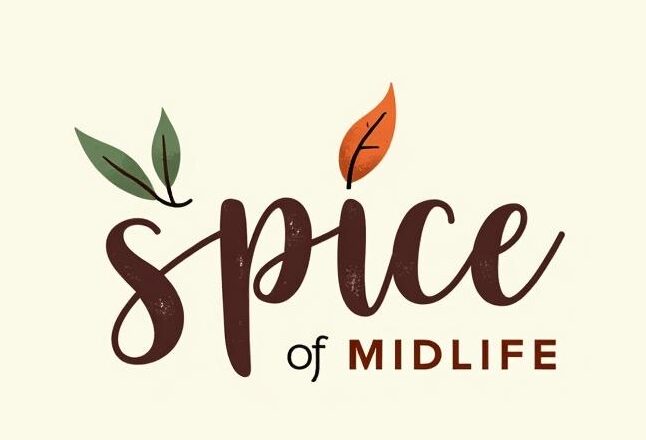
Your 2024 Guide to Feeling Fabulous in your 40’s, 50’s and beyond
If you haven’t heard– Midlife is not about managing decline—it’s about embracing a transformation.
It’s your time to rewrite the narrative. Focus on yourself. Unlock a new level of health and wellness. Embrace vitality.
If that sounds like the Midlife you want to live, you’re in the right place.
Let me share a few tips on how you can turn this natural transition into your most exciting chapter yet!
But before I do…
Did you know that women spend an average of 40% of their lives in the post-reproductive phase?
That’s a significant chapter of life!
Studies have also shown that women who make targeted lifestyle changes during Midlife often report greater satisfaction.
They feel more energized and vibrant than they did in their younger years.
Think about that for a moment: you can actually feel better than you did in your twenties or thirties!
Understanding Your Changing Body (The Real Talk Nobody Shares!)
Hot flashes, mood swings, weight changes—these are more than just “annoyances.”
They are signals from your body about what it needs.
Instead of fighting these changes, take a moment to listen. Are you fueling your body with the right nutrients? Are you making time for restorative sleep? Are you taking steps to manage stress?
Understanding these cues is really the first step in working with your body rather than against it.
Breaking Down the Hormonal Shifts
During perimenopause, estrogen and progesterone start to fluctuate.
This is why you start to notice changes in your energy, mood, or even the way your body handles stress.
By the time menopause “kicks in,” these levels stabilize at lower levels, which can impact everything from your metabolism to your bone density.
It’s not uncommon to feel like you’re navigating a whole new body, and in a way, you are!
The good news? These shifts are part of a natural process, and understanding them is key to managing them effectively.
Why Aren’t My Old Health Routines Working Anymore—
Have you ever felt like your go-to diet or exercise routine suddenly stopped delivering the same results?
Maybe you’ve noticed stubborn weight gain, especially around your midsection, as estrogen levels drop. That’s totally normal.
Your body’s metabolism and hormonal landscape have shifted—it’s your body adjusting to a new hormonal balance.
Recognizing these changes can empower you to adopt targeted strategies that will work with your body, not against it.
For example, you can add more protein to your meals. Incorporating strength training into your workouts can help too.
Protein plays a vital role in maintaining muscle mass. This is especially important as your body naturally starts to lose muscle with age.
Consider:
- Breakfast Boosts: Add Greek yogurt to your morning routine. Include eggs or a plant-based protein smoothie. Start your day with a muscle-building edge.
- Smart Snacks: Swap carb-heavy snacks for protein-rich options like cottage cheese, hummus with veggies, or boiled eggs.
- Dinner Upgrades: Include lean protein like chicken, fish, tofu, or legumes in your evening meals. This ensures your muscles get the nutrients they need to recover and rebuild.
Aim for 20–30 grams of protein per meal to help meet your body’s increased demand and support a steady metabolism.
Why Traditional Workouts Can Do More Harm Than Good
High-impact, high-intensity workouts can be tempting when you’re trying to keep or lose weight. But, they aren’t as beneficial in midlife.
Hormonal shifts during perimenopause and menopause can increase cortisol levels.
Intense exercise can make this worse.
It can lead to fatigue, muscle breakdown, or even weight gain around the midsection.
- Example: If you have been pushing through endless cardio sessions but feel constantly tired, pay attention. It’s a sign your body needs something different. Instead, try mixing in restorative practices like yoga or Pilates to balance your energy.
- Fun Fact: Studies show that over training can lead to sleep disruptions. It can also hinder recovery. Less can actually be more when it comes to working out in midlife.
The Game-Changing Benefits of Strength Training
Strength training is not just about building muscle.
It’s one of the best ways to protect your bones.
It boosts your metabolism and enhances overall energy during midlife. Thus, becoming a crucial addition to your routine.
- Example: Incorporate exercises like squats, lunges, or resistance band routines that target multiple muscle groups. Even a twenty-minute session twice a week can yield amazing results.
- Real-Life Impact: Strength training also improves functional fitness. You’ll feel stronger and more capable during everyday tasks like lifting groceries or gardening.
- Pro Tip: Don’t be afraid to start small! Body weight exercises or light dumbbells are perfect for beginners.
Low-Impact Exercises That Deliver Optimal Results
Low-impact does not mean low-effort—it means moving in ways that are gentle on your joints while still being effective.
These exercises allow you to stay active without putting unnecessary strain on your body.
- Walking with Intention: A brisk thirty-minute walk can improve cardiovascular health, burn calories, and clear your mind. Add some hills or intervals for an extra challenge.
- Swimming or Water Aerobics: These are excellent options for building endurance and strength while minimizing stress on joints.
- Yoga and Pilates: These practices improve flexibility, core strength, and balance—key components for preventing injuries as you age. Plus, they’re great for mental clarity and relaxation.
The key to staying consistent is creating a routine that leaves you feeling refreshed instead of wiped out.
Nutrition Strategies for Your New Normal
Wellness during Midlife is a season of transformation, and your body’s nutritional needs shift along with it.
Listen to your body’s cravings and make intentional food choices.
This approach can fuel your energy. It supports your metabolism and eases common symptoms like fatigue or inflammation. The best part? These changes don’t need a total diet overhaul—just a few smart tweaks to your routine.
Essential Nutrients Your Body Craves During Midlife Wellness
As hormones fluctuate, your body needs more of certain nutrients to work at its best.
Here’s what to focus on:
- Calcium and Vitamin D: These are critical for maintaining bone density as estrogen levels decline. Add more leafy greens, almonds, and fortified foods like plant-based milk to your diet. Spend time in the sun (with sunscreen!) or consider a supplement to boost vitamin D levels.
- Omega-3 Fatty Acids: Found in salmon, walnuts, and chia seeds, omega-3’s help reduce inflammation. They also support brain health, which is especially important during midlife.
- Magnesium: This mineral, found in spinach, pumpkin seeds, and black beans, supports better sleep, muscle functions, and stress management.
Smart Meal Timing to Support Your Changing Metabolism
Your metabolism evolves during midlife, so when you eat can be just as important as what you eat.
- The Power of Protein in the Morning: Start your day with a breakfast rich in protein. This helps to stabilize blood sugar and keep energy levels steady. For example, try scrambled eggs with avocado on whole-grain toast or a smoothie with Greek yogurt, spinach, and almond butter.
- Avoid Long Fasting Periods: While intermittent fasting works for some, it can be counter-productive for others. Instead, aim to eat balanced meals every 3-4 hours to create stable energy and mood.
- Light Evenings, Energized Mornings: Have a lighter dinner with lean protein and veggies. For example, try grilled chicken with roasted Brussels sprouts. These meals can improve sleep quality. This sets you up for a productive next day.
Practical Tips for Reducing Inflammation Through Food
Chronic inflammation can exacerbate symptoms like joint pain, fatigue, or weight gain, but anti-inflammatory foods can help.
- Color Your Plate: Fill half your plate with colorful fruits and veggies. Include items like blueberries, bell peppers, and kale. These are rich in antioxidants.
- Spices That Heal: Incorporate turmeric, ginger, and cinnamon into your meals for their inflammation-fighting properties. For instance, add a dash of turmeric to your morning smoothie or sip on ginger tea in the afternoon.
- Cut Back on Sugars: Reduce processed sugars and opt for natural sweeteners like honey or maple syrup in moderation.
The Connection Between Stress, Sleep, and Weight Gain During Midlife
Have you ever craved carbs or sweets after a sleepless night?
That’s not just willpower failing—it’s biology. Poor sleep disrupts hunger hormones like ghrelin and leptin, making you feel hungrier and less satisfied after eating. Add the stress hormone cortisol to the mix. It encourages fat storage, especially around the belly. It’s clear why these factors can impact your weight.
To counteract this:
- Eat Balanced Meals: Include protein, healthy fats, and complex carbs to stabilize your blood sugar and reduce cravings.
- Move Daily: Even light activities like walking or gentle yoga can help regulate cortisol and improve sleep quality.
- Practice Gratitude: Write down three things you’re thankful for each evening. This can shift your focus from stressors to positives. It improves your mindset for better rest.
Managing Stress for Symptom Relief
Stress is more than just an emotional experience; it triggers a physical response that can make midlife symptoms worse. By finding ways to manage stress, you can reduce its impact on your body.
- Mindful Breathing: When stress feels overwhelming, practice deep breathing exercises. For example, inhale for a count of four, hold for four, and exhale for six. This calms your nervous system and lowers cortisol levels.
- Engage in Creative Outlets: Find a painting, cooking, or gardening class. Immersing yourself in a creative activity can help shift your focus. It can also reduce stress hormones.
- Laugh More: Watch a funny movie or call a friend who makes you laugh. Laughter not only boosts your mood but also decreases stress hormones and increases endorphins.
Sleep Strategies That Work During Midlife
Getting consistent, restorative sleep is one of the most powerful ways to combat stress and reduce symptoms.
Here are a few targeted tips:
- Improve Your Sleep Environment: Keep your bedroom cool and dark. Consider using blackout curtains to lessen disruptions.
- Experiment with Sleep Aids: Natural supplements like magnesium can help your body transition into relaxation. Herbal teas with chamomile and valerian root are also effective.
- Adjust Your Evening Routine: Your body’s melatonin production decreases with age. Start dimming the lights an hour before bed, avoid screens, and try calming activities like a warm bath or meditation.
The beauty of addressing stress and sleep is that small, consistent habits can create a positive domino effect. By calming your mind, these habits can set the tone for a peaceful day ahead.
Building Resilience Through Community and Connection During Midlife
Human connection is a powerful antidote to midlife stress and isolation.
Sharing experiences, learning from others, and fostering meaningful relationships can boost your resilience and sense of purpose.
- Example: Joining a local book club provides support and inspiration. A fitness class or online community focused on midlife wellness can also offer these benefits.
- Reconnect with Old Friends: Have a simple coffee date with a trusted friend. Alternatively, make a phone call. Both actions can help you feel more grounded and less alone.
- Be Open to New Connections: Volunteering can introduce you to like-minded people. Community events also help you meet people who share your goals and interests.
Tools for Navigating Major Life Transitions with Grace
Midlife often brings significant changes—kids leaving home, career shifts, or even caring for aging parents.
While these transitions can be overwhelming, having the right tools can make all the difference.
- Create a Vision Board: Visualize your goals for this phase of life. This can help you stay focused on what matters most. Include images or words that represent health, joy, and growth.
- Seek Professional Guidance: Whether it’s a therapist, life coach, or financial advisor. Seeking help during times of change can offer clarity. It can also offer direction.
- Embrace Adaptability: Remember, it’s okay to pivot. An empty nest sometimes leaves you feeling lost. Use this time to explore new hobbies. Rediscover passions you set aside earlier in life.
Your Midlife Mental Wellness Roadmap
Embrace this time as a chance to redefine what health, happiness, and fulfillment mean to you. Remember, it’s not about perfection; it’s about progress.
So, what’s your first step?
Choose one idea that resonates with you from this guide and give it a try.
You’ll be surprised how even the simplest shifts can create a ripple effect of positive change.
Midlife is your time to shine—let’s make it extraordinary together!
🎁 Please Enjoy My Gift to You!
Download our free guide, “Midlife Magic: Your Recipe for a Vibrant Life”. This 20-page journal includes reflection prompts. It offers inspirational quotes. There are actionable steps to help you make the most of this incredible journey.
[Click to Download]
Join the Conversation!
Your voice matters here at Spice of Midlife! 🌟 I’d love to hear your thoughts, experiences, and ideas about navigating this vibrant chapter of life. Have a tip, story, or question to share? Let’s keep the conversation going in the comments section below!
Have you tried a recipe, embraced a new routine, or navigated your own midlife transformations? Your insights can inspire someone else on their journey. Don’t be shy—this is a space for connection, encouragement, and a little fun along the way.
Jump in and share your story, or respond to others—you never know who needs to hear your words today! Let’s make this a community where we uplift and learn from one another. So, what’s your Spice of Midlife? Drop your thoughts below! 🌶️✨
Stay in the loop






